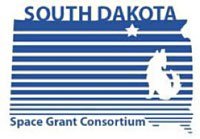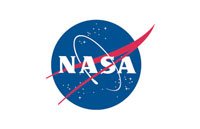The South Dakota Space Grant Consortium (SDSGC) comprises Institutional members and affiliate members. The South Dakota School of Mines and Technology is the lead institution; other institutional members are South Dakota State University, Augustana University, Journey Museum, Discovery Center and the United States Geological Survey EROS Data Center. The consortium’s affiliate network also includes public, private, and tribal universities; informal science centers; industry partners; and state and federal government agencies such as the Sanford Laboratory at the former Homestake Mine.
SDSGC was established Mar. 1, 1991 by a NASA Capability Enhancement Grant. There are 52 Space Grant Consortia across the country.
The South Dakota Space Grant Consortium seeks to strengthen STEM education and associated career choices through coordinated programs in higher education, precollege education, informal education, and public service. A significant priority is to increase diversity in STEM fields by recruiting female students and students from underrepresented groups.

Vision and Mission
The vision of the South Dakota Space Grant Consortium (SDSGC) is to expand opportunities for all South Dakotans through education, research, and public service in the fields of aerospace, earth science, and supporting STEM disciplines. As the link between NASA and the citizens of South Dakota, SDSGC's mission is to instill the spirit of exploration and discovery in students and educators and in the general public, with a special focus on the fields of science, technology, engineering and mathematics that are essential for the development of the nation’s workforce.
Impact and Related Research
The Director of the SDSGC also oversees the NASA EPSCoR. The goal of South Dakota NASA EPSCoR is to improve research capacity in science and engineering fields that are critical to NASA’s mission and to promote science and technology-based economic development in the state. South Dakota NASA EPSCoR proposals have the highest funding rate of the nation’s 28 EPSCoR jurisdictions, having successfully competed for seven out eight possible awards since 2007 (total NASA funding of $5.25 million).
Among the activity highlights of the SDSGC at South Dakota State University campus are the robotics club (EE & CSci Dept), Flandreau Indian School (FIS) Success Academy, and ACE Camp.
The Robotics Club: The space grant has significantly helped the robotics club in building a navigation test-bed, as well as purchasing materials to build a robot. Based on this robot and test-bed, the club participated in April at the MICS 2012 robotics competition in Cedar Falls. Though the students did not get an award in the competition, they strongly felt the experience is very much beneficial for their engineering study. The students are planning to improve their design and again participate in MICS 2013 robotics competition. The robotics club is student-run and can be contacted for additional details.
The FIS Success Academy: The SDSGC has been a partner in this activity from its beginning. The Success Academy is an early and intensive college preparatory program and serves more than 200 Native American high school students each year. It is funded by Citi Foundation, SDSGC, SDSU and FIS. Success Academy began in SDSU’s College of Engineering 12 years ago and has since expanded to involve the entire university, serving more than 1800 American Indian students since its inception. The program emphasizes career areas identified by tribal leaders as being of critical need to their communities (e.g., engineering, agriculture, education, pharmacy, nursing, journalism and nutrition.) It has evolved into a comprehensive, four-year college preparatory program serving all freshmen, sophomores, juniors and seniors attending FIS. Each individual FIS student visits SDSU 15 times before he or she is a senior in high school.
Success Academy seniors participate in a year-long Countdown to College program, ensuring that they make a smooth transition from high school to higher education. Countdown to College activities include completing college applications, prepping for and taking the ACT test, completing FAFSAs and scholarship forms, visiting the academic departments in which they intend to major, and attending a pre-orientation day especially for Native students.
ACE Camp: The Aerospace Career & Education Camp, which is a career exploration camp for anyone interested in aviation or aerospace. This four-day camp provides high school-aged students (those entering 9th grade through graduated seniors) the opportunity to get an early start on aviation and aerospace careers. At the camp, students will receive 2 hours of flight training, get behind the controls of and fly an aircraft, launch a space shuttle using a computer generated flight simulator program, and build and launch air rockets. ACE Camp enables students to make informed decisions as they consider college and career options. Having completed the program, students are more knowledgeable about the importance and diversity of aviation and aerospace careers, how aviation and aerospace industries have developed and grown to what they are today, and are aware of future career opportunities and developments.



